Why you can trust Tom's Hardware
To read about our monitor tests in-depth, please check out Display Testing Explained: How We Test PC Monitors. We cover brightness and contrast testing on page two.
Uncalibrated – Maximum Backlight Level
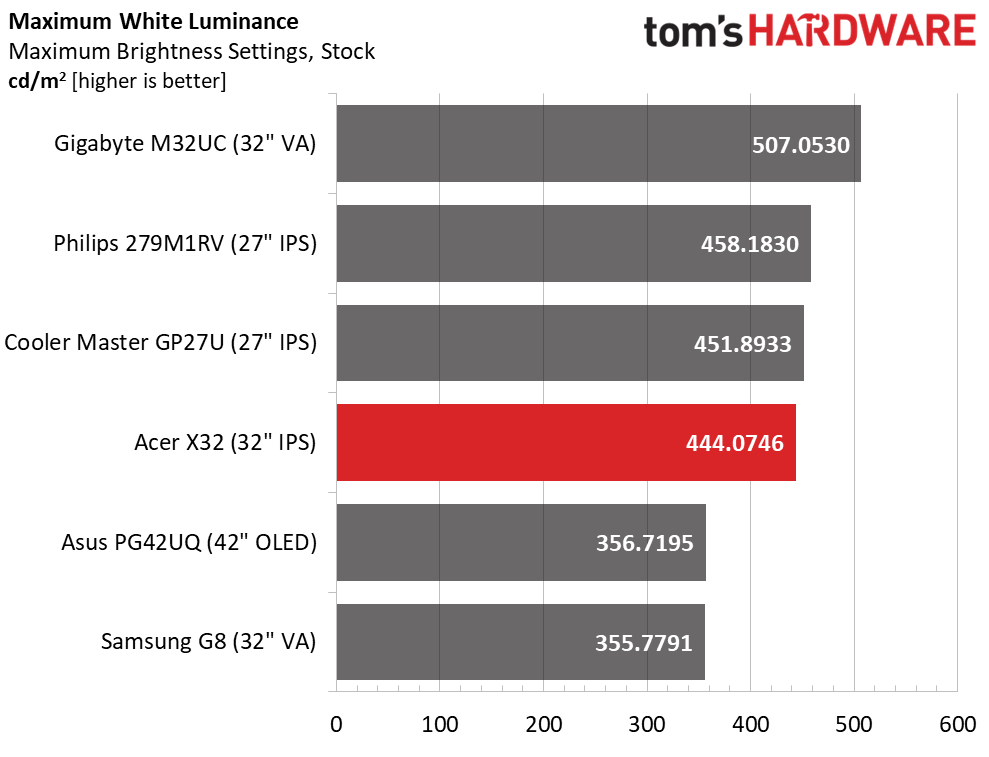
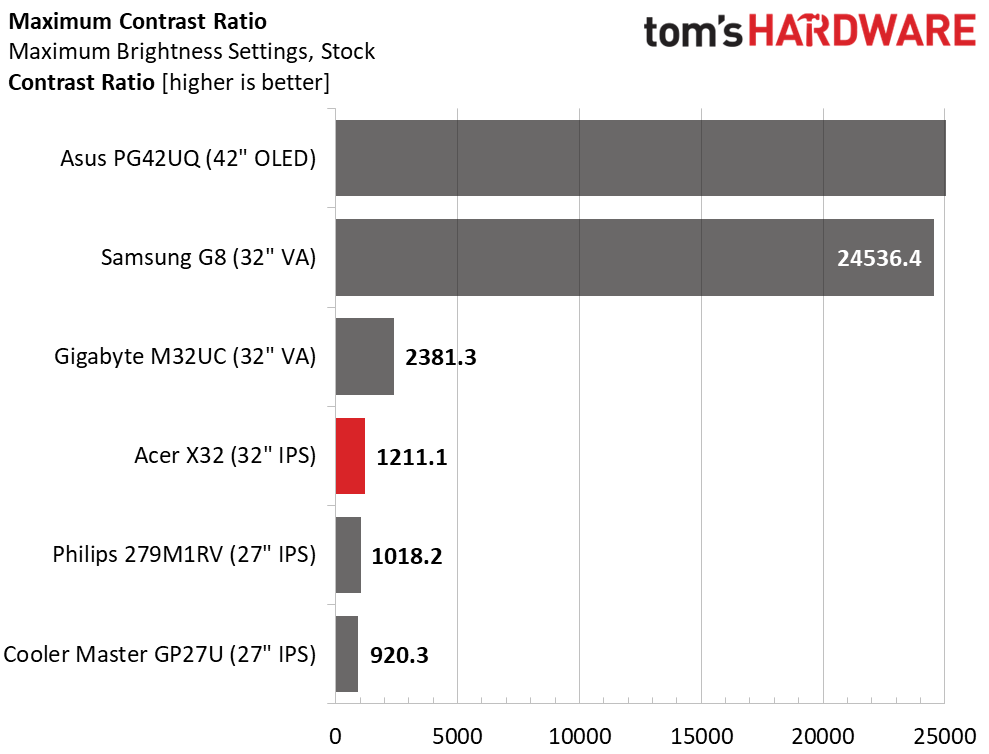
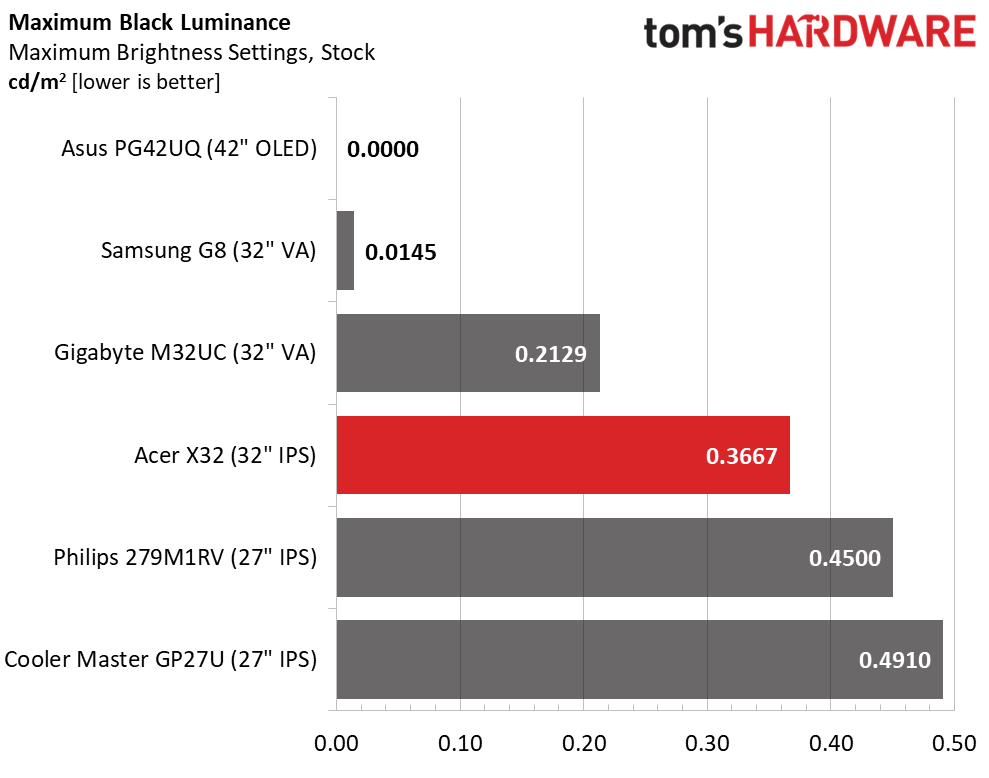
To make a fair comparison to the other screens, I had to change a couple of the X32’s default settings, most importantly, the Max Brightness option. This is a power-saving measure that limits SDR brightness to about 120 nits, too low for my tests. The maximum output for SDR is actually a healthy 444 nits. The slider is very coarse in its operation and as you get lower, the gaps increase to as much as 7 nits. By the time it’s on zero, the screen measures only 3 nits. I prefer finer control to make it easier to dial in a specific value.
Black levels are on par with premium IPS panels with default contrast over 1,200:1, very good performance. This is with local dimming turned off. Turning it on ups the ratio to over 50,000:1.
After Calibration to 200 nits
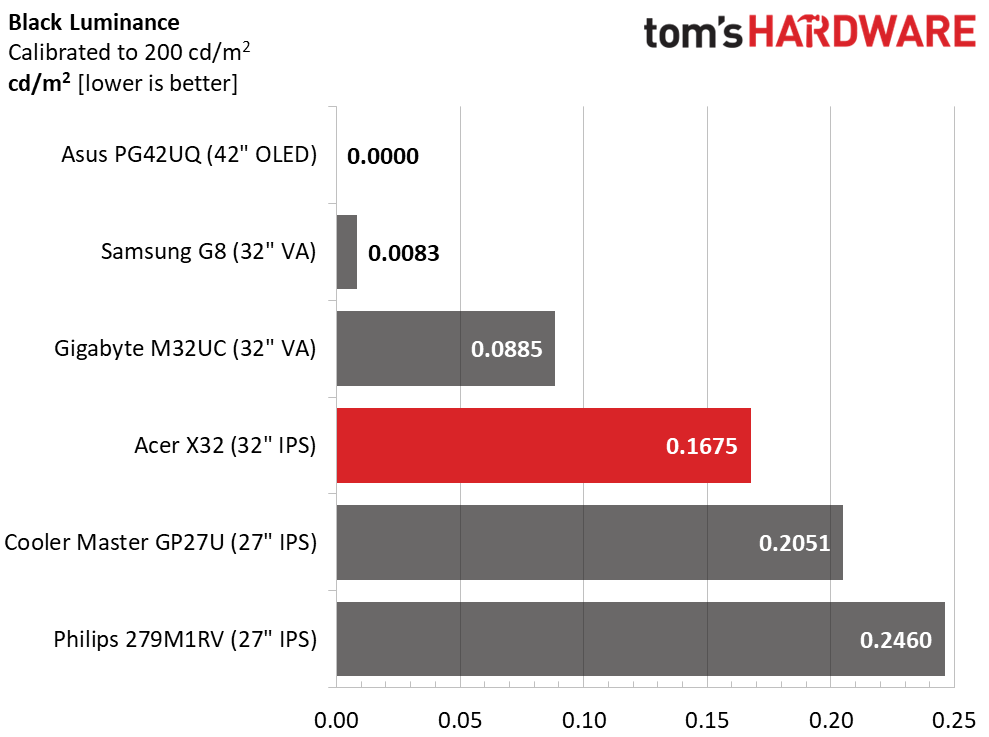
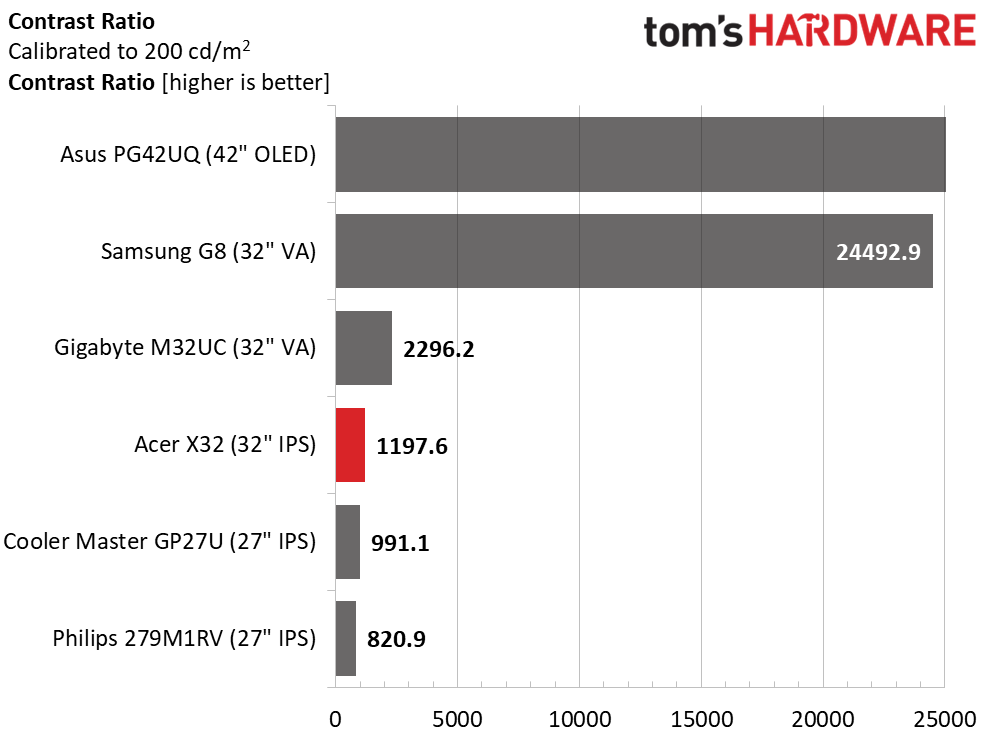
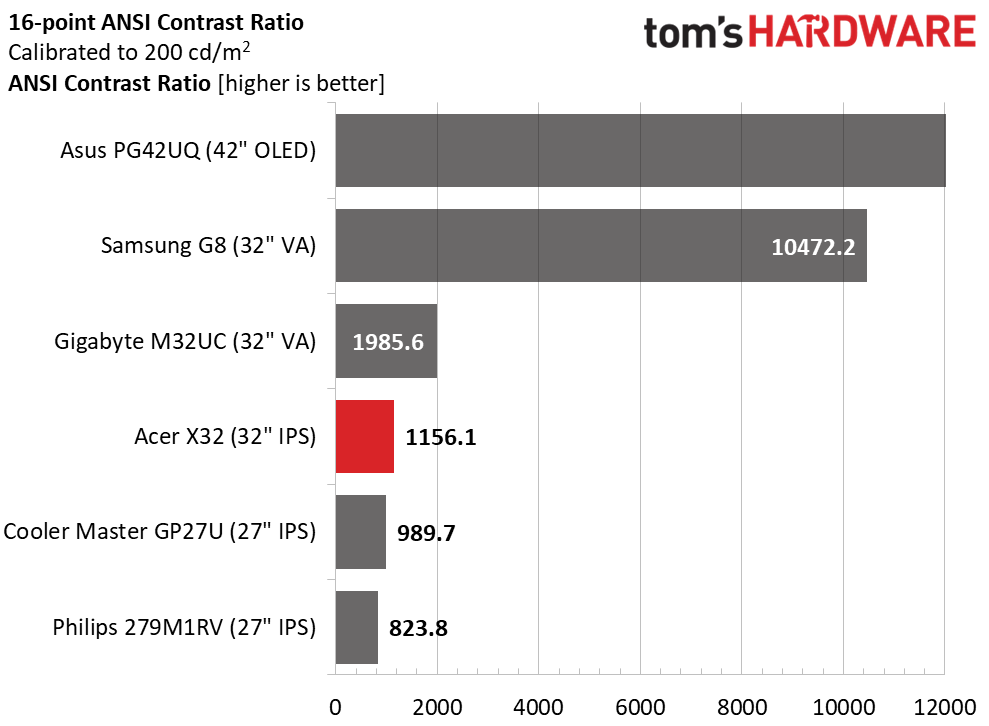
Calibration doesn’t affect contrast even though I lowered the contrast slider two clicks to solve a color clipping issue. This is as it should be. You can enjoy the X32 without its local dimming and still see a well saturated picture with plenty of depth and sharpness. It doesn’t get much better than this.
ANSI contrast is very consistent at nearly the same level as the static value. Quality control is superb here, with precisely fitted parts like the grid polarizer. If you engage local dimming, the ANSI value goes over 50,000:1 as well. The Asus OLED has infinite contrast here as its black level is unmeasurable in every test.
MORE: Best Gaming Monitors
MORE: How We Test PC Monitors
Get Tom's Hardware's best news and in-depth reviews, straight to your inbox.
MORE: How to Buy a PC Monitor
MORE: How to Choose the Best HDR Monitor
Current page: Brightness and Contrast
Prev Page Response, Input Lag, Viewing Angles and Uniformity Next Page Grayscale, Gamma and Color
Christian Eberle is a Contributing Editor for Tom's Hardware US. He's a veteran reviewer of A/V equipment, specializing in monitors. Christian began his obsession with tech when he built his first PC in 1991, a 286 running DOS 3.0 at a blazing 12MHz. In 2006, he undertook training from the Imaging Science Foundation in video calibration and testing and thus started a passion for precise imaging that persists to this day. He is also a professional musician with a degree from the New England Conservatory as a classical bassoonist which he used to good effect as a performer with the West Point Army Band from 1987 to 2013. He enjoys watching movies and listening to high-end audio in his custom-built home theater and can be seen riding trails near his home on a race-ready ICE VTX recumbent trike. Christian enjoys the endless summer in Florida where he lives with his wife and Chihuahua and plays with orchestras around the state.
-
Sluggotg Very nice! I wish they would make a 43" model. It is pricey but not insane. We are seeing significantly better monitors at decent prices. This is a luxury item, but really good gaming monitors are very reasonable now days.Reply -
Kridian Reply
Oh! It's INSANE alright! $1,274.03 is absurd.Sluggotg said:It is pricey but not insane. -
spoidz Do you have the exact Model number you reviewed? I am not finding the exact specs as listed on Amazon or even the Acer Site. They both do not list the native GSync in the specs:Reply
https://www.acer.com/us-en/predator/monitors/x32-fp - FP Model only
The Review Amazon link is also FP model -
Degrader The color settings are available in HDR mode with the latest firmware, v010. While the overall color accuracy is good in HDR there's a strange color temperature shift happening. This shift occurs when dark images are being displayed. Bright images do have temperature of around the 7000K on the unit I had, but the temperature increases significantly in dark content, up to 9000K, which makes it way too cool. Also the Adaptive Dimming setting "Fast" introduces heavy flickering in several content. These issues are not seen by the reviewer apparently.Reply -
sblantipodi Can we trust a review when the reviewer does not even know that X32 does not exist and that the monitor he reviewed does not have the GSYNC module even if he thinks so? :)Reply
In any case I have the X32FP (the one reviewed here) and I confirm that this monitor is a new reference in terms of speed and colour accuracy. HDR is amazing on it so I recommend it hands down. -
spoidz Replysblantipodi said:Can we trust a review when the reviewer does not even know that X32 does not exist and that the monitor he reviewed does not have the GSYNC module even if he thinks so? :)
In any case I have the X32FP (the one reviewed here) and I confirm that this monitor is a new reference in terms of speed and colour accuracy. HDR is amazing on it so I recommend it hands down.
Is it listed anywhere as at least G-Sync Compatible in your Monitor documents? I will likely upgrade to RTX4090 this year unless I can only get this level of monitor to run best with 7900XTX. -
sblantipodi Replyspoidz said:Is it listed anywhere as at least G-Sync Compatible in your Monitor documents? I will likely upgrade to RTX4090 this year unless I can only get this level of monitor to run best with 7900XTX.
No it's not written in the documentation because the documentation talks about Freesync Premium PRO.
I have a 4090 and GSYNC works like a charm -
Jake Hall Yeah, I'm really confused here. Not seeing a G-Sync model, only the Freesync FP model.Reply -
riddick51pb Replysblantipodi said:No it's not written in the documentation because the documentation talks about Freesync Premium PRO.
I have a 4090 and GSYNC works like a charm
@Jake Hall i'm going out on a limb here and stating that TH Member @sblantipodi found the Predator X32 FP "works like a charm" with the nvidia 4090. now, if someone tells me that i am in error, well that is entirely possible.Jake Hall said:Yeah, I'm really confused here. Not seeing a G-Sync model, only the Freesync FP model.